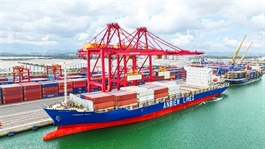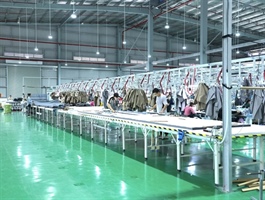Supply chain credit model helps SMEs access bank loans without collateral
Supply chain credit model helps SMEs access bank loans without collateral
The model is still facing many barriers in implementation as it is estimated that 65 per cent of sales contracts are still being implemented manually, which limits the appraisal and granting of credit.

SMEs contribute more than 45 per cent of GDP, more than 31 per cent of total state budget revenue and create more than 60 per cent of jobs. Photo vneconomy.vn |
The supply chain credit model based on sales contracts instead of collateral is expected to become a promising solution to help small and medium-sized enterprises (SMEs) access bank loans, experts said.
Mạc Quốc Anh, Director of the Institute of Economics and Enterprise Development, and Vice President of the Association of Hà Nội-based Small and Medium Enterprises, said that the model had been tested by the banking industry, allowing enterprises participating in the chain to borrow capital based on sales contracts, instead of depending on collateral.
However, Anh said, the model was still facing many barriers in implementation as it was estimated that 65 per cent of sales contracts were still being implemented manually, which limited the appraisal and granting of credit.
“Large enterprises have not made full and clear commitments so that banks can trust their cash flow. Meanwhile, SMEs rarely have long-term contracts, so their cash flow is often disrupted, and there are incidents of contract cancellation and contract termination," Anh said.
To effectively implement the credit model, Anh said that it was necessary to complete the legal framework, including the recognition of electronic contracts and application of information technology such as blockchain, which would help increase transparency in the entire supply chain and minimise risks, especially credit risks.
In addition, it was necessary to develop a set of chain credit standards and promote close cooperation between banks, industry associations and large enterprises to establish a guarantee mechanism.
According to Anh, the association has also advised enterprises to set aside risk reserve funds of 3-5 per cent of revenue and profit so that banks can feel secure when disbursing.
"It is necessary to encourage enterprises which are at the beginning of the chain to sign long-term contracts of 3-5 years, helping SMEs have a basis to prove that cash flow is long-term, and banks can easily disburse," Anh said.
Ngô Tấn Long, Deputy General Director of ACB, said that the supply chain financing was an inevitable trend, helping optimise cash flow between suppliers, large manufacturers and distributors, as well as reducing liquidity risks.
"Although the efficiency of the chain credit is currently not as expected. However, with investment in digital technology, electronic signatures and technical infrastructure, we believe this segment will grow strongly," Long said.
According to Long, ACB is implementing a closed financing for the entire chain from input to output, focusing on fast-moving consumer goods and distribution trade, which involve many SMEs. This is also the key customer group in ACB's development strategy.
ACB is currently offering a VNĐ20 trillion credit package with preferential interest rates. At the same time, the bank also provides flexible loan forms such as cash flow loans, overdrafts, unsecured loans and long-term loans of up to 15 years.
In addition, ACB also promotes non-cash payments, supporting SMEs to access capital more effectively and flexibly in production and business activities.
According to Anh, SMEs are currently the backbone of the Vietnamese economy. SMEs are a key force, not only promoting economic growth, but also contributing to social stability through employment and innovation.
According to the General Statistics Office, as of June 2025, the country had about 980,000 enterprises, of which SMEs accounted for 97 per cent. The SMEs contributed more than 45 per cent of GDP, more than 31 per cent of total State budget revenue and created more than 60 per cent of jobs.
However, Anh said, SMEs were facing many major challenges, including a lack of capital, systematic strategies and digital transformation skills.
- 07:40 28/07/2025























